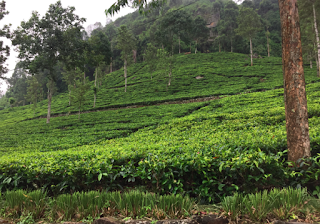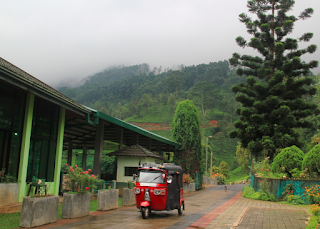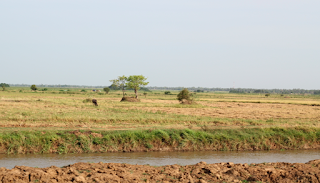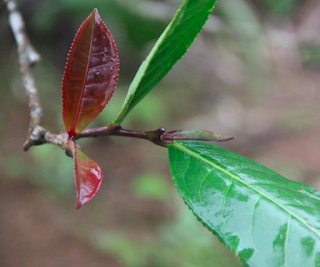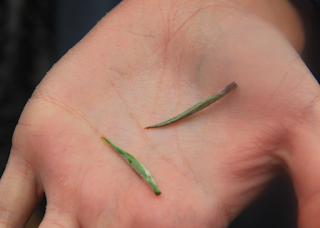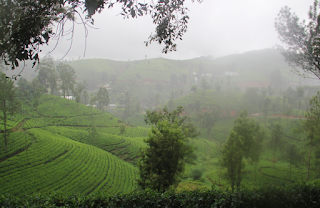Puneet Goenka - Ross School of Business
Imagine a world in which everything that anyone outside the U.S. knew about the U.S. came from the news. The country would struggle to garner respect and admiration for itself. The only thing people would hear about is the string of senseless gun shootings, racial attacks, and Donald Trump’s media escapades around his presidential campaign – making it impossible for a non-U.S. resident to form a positive opinion about the country.
Imagine a world in which everything that anyone outside the U.S. knew about the U.S. came from the news. The country would struggle to garner respect and admiration for itself. The only thing people would hear about is the string of senseless gun shootings, racial attacks, and Donald Trump’s media escapades around his presidential campaign – making it impossible for a non-U.S. resident to form a positive opinion about the country.
But thankfully, the U.S. is able to export so much more to the world
than its domestic news. It has a brigade of artists and musicians whose songs are played on radio stations around the world.
It has a bearded man to sell greasy chunks of fried chicken in red
fast-food outlets. It has citizens
working in organizations such as Peace Corps and USAID to dispel myths and
misconceptions about American life and culture.
It has the imagination and skill to recreate dinosaurs on the big-screen and enthrall
audiences from Adelaide to Anaheim and beyond.
The U.S. (and several other countries) through its own efforts and that
of others is able to spin multiple narratives about its country, culture, and
its people.
Why then are several developing countries stuck with a single, often
negative, narrative – that of being undeveloped and poor. Either they really have a single narrative to
offer the world, or there is a severe lack of narrators. In my experience working in three countries
over the summer, I have found the latter to be true.
On my last weekend in Uganda, I made a quick trip to Kigali, the
capital city of Rwanda. As an
undergraduate student I raised funds for an organization that provided life-saving
HIV drugs to Rwandan clinics without knowing anything else about the
country. The only thing I had known
about Rwanda was that its population struggled with HIV/AIDS, and that they
were largely poor. That was the
narrative that stayed with me all these years in the absence of any other news
or information about Rwanda from personal discussions or from the consumption
of traditional and social media.
Kigali has to be one of the cleanest, and most organized cities in
the developing world. I looked hard but wasn’t
able to find much garbage on the streets or other public spaces, roads and
related infrastructure were top-notch, and there was a general civic sense in
following traffic rules and road signs.
How does Kigali achieve this? Partly
through a Government mandated community service program that requires all
citizens to partake in community building activities once a month. On probing further as to why this program
came about I learnt that it was established as a peace building endeavor after
the horrific 1994 genocide that killed millions of people from a particular
ethnic group in Rwanda.
In his 2009 TED talk, Shashi Tharoor, former Indian Member of
Parliament and senior UN official talked about the importance and impact of
countries generating soft power, a way of attracting people to a country by its
culture, political beliefs, and foreign policies. He goes on to argue that McDonalds may have
done more to improve U.S. soft power than any formal policy or activity. In recent months, India’s Prime Minister has
rolled out one campaign after the other.
‘Make in India’ brands India as a manufacturing powerhouse, ‘Swacch
Bharat’ (Clean India) aims at bringing basic cleanliness and hygiene to the
forefront of Indian consciousness, while the more recent ‘World Yoga Day’ was
an endorsement by the United Nations of the significance of Yoga and by
extension, of India, the country of its origin.
These campaigns can, and should, be viewed with caution. Unless backed by the right guidelines and
adequate resources, they could end up being PR campaigns that benefit the Prime
Minister’s next election campaign more than it benefits the country. However, I also realize the potential upside
of this if things do move in the right direction – more so after my experiences
this summer. It gives India the
opportunity to develop additional narratives for itself and its people, strengthening
its soft power.
Having a dominant negative narrative define a country and its people is
detrimental. It warps public
perceptions, impacts business and tourism, influences policy and Government
more than it should, and leaves us all with somewhat silly and misguided
biases. Johannesburg’s single dominant
narrative of being crime-ridden for example warped my own thoughts and actions a
few months ago.
While driving to a performing arts show with a friend, she swerved the
car to avoid hitting a man who was laying on the street. He was delirious and was asking for
help. He could also have been drunk, or
putting on a show to get people to step outside of the car while giving him
easy access to their valuables, or maybe have an accomplice drive away with the
car. In that split second of decision
making I was shamefully unsure of how to react – stop and help someone that may
have been hurt or drive away. All the
stories of crime, mugging, and theft flooded my mind and drowned out my own
personal values. Thankfully my friend
who was in the driver’s seat got to make the decision, and she made the right
one of stopping to help.
Developing multiple narratives in my view is a democratic undertaking
that needs equal participation by Government, business, and civil society. Governments, businesses, and citizens are however
likely to be constrained by the resources available within the country. Access and penetration of the internet/cell
phones, stable Governments that support the growth of homegrown multinational
corporations, or the ability to connect globally in a universal language are
all factors that could inhibit a resource poor country from exporting more than
stories about its poverty and challenges to the world. Rwandan artists for example may not be able
to have the global appeal that American or British artists enjoy, their food
may not transcend borders the way Italian cuisine has, and its private sector
may need another decade or two to build global companies. But, maybe the story of how a country comes
together once a month to better their communities can prove to be an inspiring
and workable model for other countries.
And maybe this Rwandan story is worth sharing with other young
undergraduates who may still be fundraising for HIV clinics in Rwanda and
developing a narrow and negative narrative about the country the same way I had
several years ago.



